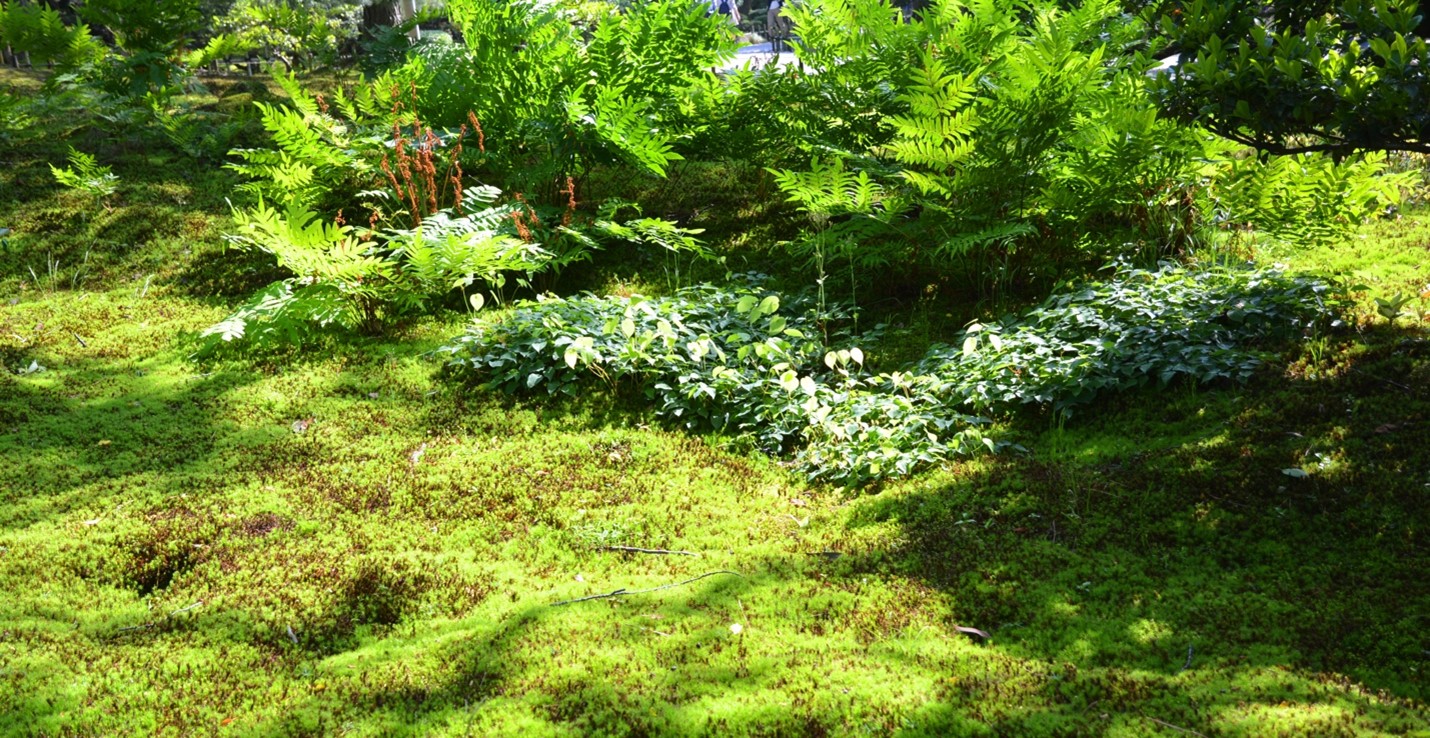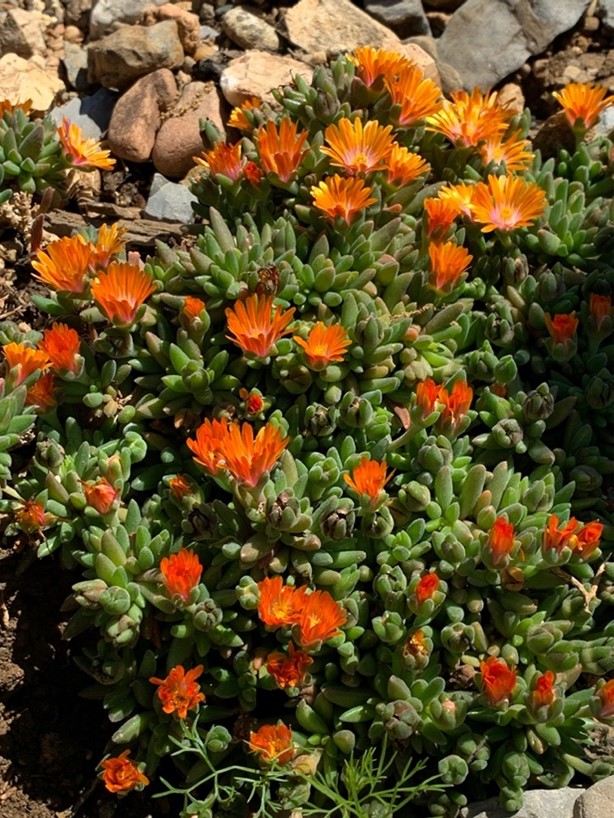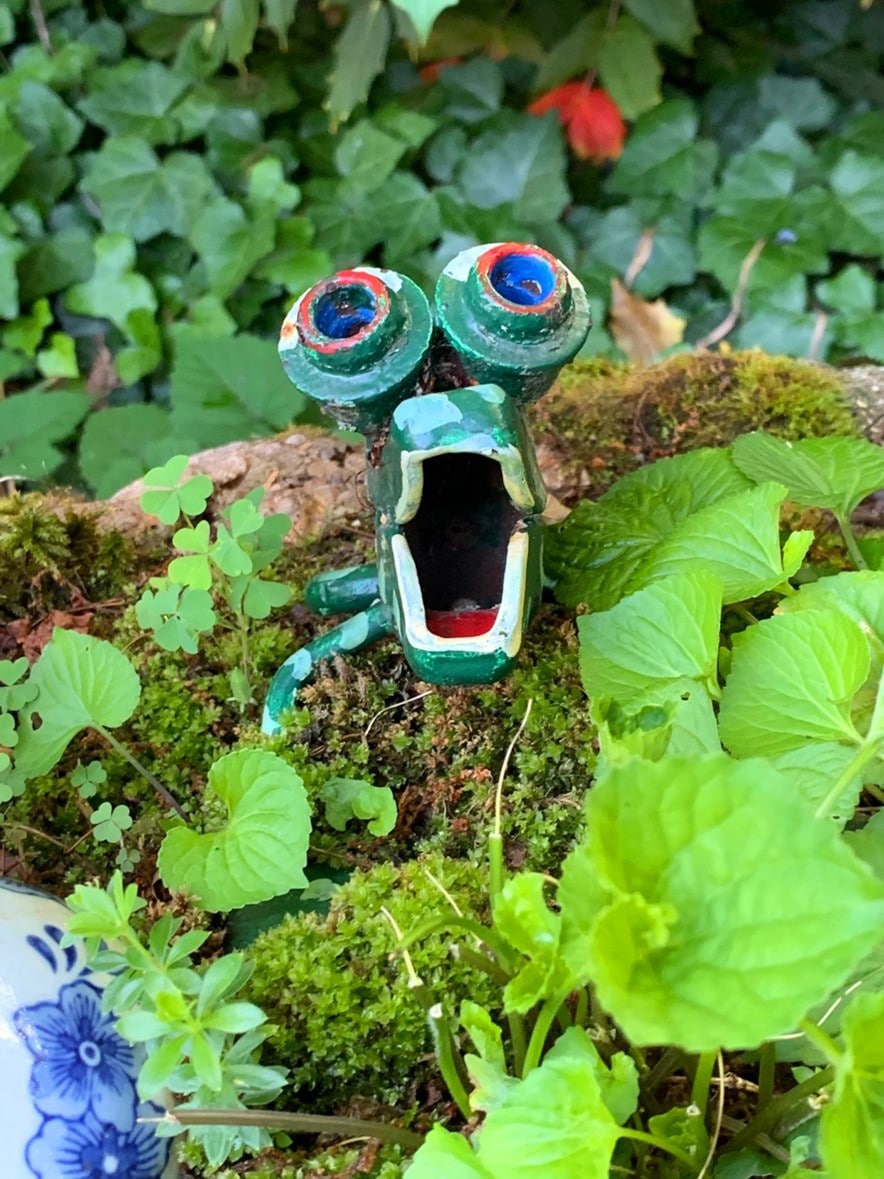TINY HORTICULTURE
When it comes to garden design, we all tend to think big at first. Literally. I have always told my students that the one element in garden design that had better outlive them is their choice of trees. And I’m not talking about the decorations like flowering cherry or crape myrtle but rather legacy trees (oaks, maple, elm, redwood, etc.). I consider these trees that should outlive our grandchildren but that is for another blog post on its own.
What I’m going to ramble about here for the next 5 minutes or so, is tiny horticulture. One of my all-time favorite principles when speaking of landscape and garden design here in Knoxville, Tennessee (or wherever I happen to be) is that of scale. Lately I’ve really been into miniatures. (Think model railroad people and how you can create a double-take when your visitor(s) spy a small survey crew checking the level of the top of your garage beam.) I think this phase of my garden whimsy began after visiting Miniature World in Hamburg, Germany.
https://www.miniatur-wunderland.com/

I didn’t grow up with the “Where’s Waldo?” books, but I have always had a fascination with small discoveries. Some may remember the page where you had to find the hidden pictures in the old Highlights magazine. I still like to apply this same challenge to the garden. One of the coolest compliments I think you could receive is to have a return visitor comment “I’ve been here so many times but I’ve never seen that before.
So, apply this same small way of thinking to the plants in your garden. You’ve likely heard the phrase “the beauty is in the details”. Have a closer look next time you find yourself on your hands and knees pulling a few weeds and see what’s clinging to that shady rock under the tree in the backyard. Are those little splotches clinging to the surface lichens? (A lichen is an odd combination of a plant and a fungi and deserves its own article all together). Perhaps a bit more noticeable is the tactilely irresistible small patch of moss capping the old log you’ve been meaning to remove.
Yeah, moss! It baffles me when someone who has moss naturally growing in their yard will spend a small fortune and inject their soil with PH altering chemicals to get rid of it just with the hope they can grow more grass to mow. I say celebrate moss! I was fortunate enough to visit a few gardens in Japan where the main horticultural feature was moss and these places where truly magical plant. In addition to being the oldest living thing on the planet, moss also sequesters more carbon than all of the trees in the world combined.

Even though moss doesn’t have a root structure, it I also very drought tolerant once established. It basically goes to sleep when moisture runs low and perks back up with the first sprinkle of rain or water. Be aware though that moss gets its nutrients from the air so if you do successfully get a small moss garden established be sure not to allow leaves to lay upon it for a long period of time. I don’t own a leaf blower as I detest those noise / pollution creators so I gently broom or rake off leaves as they fall. (I know. You’re uttering those words that I hear from 99% of my clients but still find make may my eyes roll a little…. low maintenance. But I still say the definition of maintenance is in the ears of the beholder.)
There is a fantastic book by Annie Martin about moss gardening that I would highly recommend if you want some real advice about this amazing topic: https://www.timberpress.com/authors/annie-martin
If you already have a patch of moss and want to expand to other shady* parts of your garden, it is advisable to do small patches and get these well-established rather than trying to cover too much ground.
*(Yes, that’s one pretty solid constraint. Some say there are sun tolerant varieties of moss but I’ve yet to have experiences with these and would defer to Annie)
In a nutshell, in order to grow moss, you need to do these 7 things:
- Identify the shady but well drained spot
- Clear away the ground of leaves and duff to expose the soil (clayey soils are better than fluffy soils
- Purchase or forage some moss (hair cap, rock cap, sheet, or cushion moss…see the link below)
- Place entire portions or divided on the soil after giving it a little soak
- Make sure moss is firmly placed to make good contact with the soil
- Mist frequently but lightly until established (this can take a few months but once allowed to adapt to its new home, moss should be pretty self-sufficient)
- Keep leaves off (see above or even consider placing a light shade cloth or netting during leave drop season)
Here is a video that can do a much better job than I with describing the process:
https://www.youtube.com/watch?v=0VZOZeSlTRw
Another tiny wonder in the plant world is that off the species sedum. Dwarf varieties of this plant also help to create a new scale in the garden. I’ve used a variety called Ogon (Sedum makinoi “Ogon”) in various places including my very locally famous Hand Sculpture (extremely famous in our house) and it has always endured a variety of unfriendly conditions to beautifully and gracefully adorn AND miniaturize any place she be. Some additional choices for adding some tiny horticulture to you garden include: creeping thyme, oregano, and hardy ice plant (Delosperma) as pictured below.

Perhaps I raised more questions than answered in this post but my goal as always is to help bring some awareness to your gardening practices that you may have not already considered.








